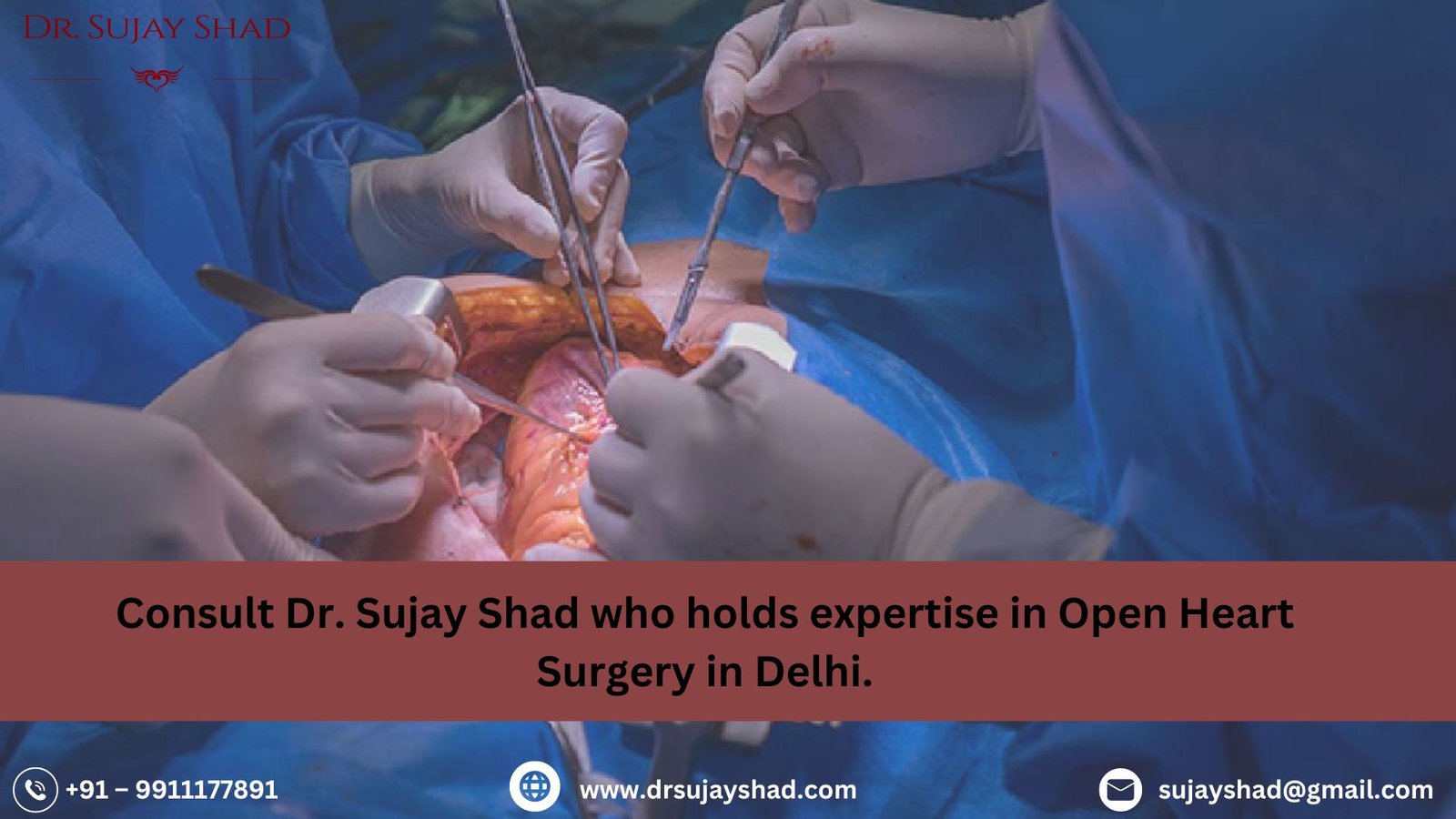Open heart surgery is one of the most crucial surgical procedures. The surgery is performed to treat a wide range of heart conditions. The surgery is performed by making a large incision across the chest to expose the heart. This incision is usually 6 to 8 inches down into the chest. It is followed by cutting through the breastbone. This is why it is called open heart surgery. Although this may sound unnerving, the surgery saves millions of lives and allows people to spend long, healthy lives. In this blog, we will discuss some insights from the best cardiac surgeon in India regarding heart surgery. This blog will also entail an overview, procedure, benefits, risks, and recovery procedure for the previously mentioned surgery.
An Overview
Open heart surgery is performed to repair or replace damaged, diseased, or malfunctioning parts of the heart. Despite the name being suggested as ‘open heart surgery,” the surgery does not always involve the heart being “open” for the entire surgery. Instead, in some cases, the surgeons may temporarily stop the heart and perform the required repair. This is done with the assistance of a heart-lung machine. This machine takes over the function of the heart throughout the procedure. Once the surgery is completed, the heart is revived and functions normally.
When Is Open Heart Surgery Needed?
Open heart surgery is recommended for individuals suffering from severe heart conditions that cannot be managed through medication or a minimally invasive procedure. Instances of common heart conditions treated with open heart surgery are as follows:
Coronary Artery Disease (CAD): CAD, or coronary artery disease, is caused by the narrowing or blocking of arteries associated with the heart. These arteries are known as coronary arteries. Now, the narrowing or blocking of arteries is usually caused by the buildup of plaque. Building up of plaque results in restricted blood flow followed by chest pain. The medical term for chest pain is angina. In addition to that, this ultimately results in a heart attack.
Moreover, treating this disease requires bypass grafting called CABG. It helps in rerouting the blood flow using the healthy blood vessels from another part of the body.
Heart Valve Disease: Open heart surgery is also performed to treat heart valve disease. During this surgery, the damage or disease is repaired or removed and replaced with an artificial valve. Now, the replacement valve could be a biological or artificial valve.
Aortic Aneurysm: Aortic aneurysm occurs when the walls of the aorta get damaged or weakened and become bulged. The surgery is performed to replace or repair the damaged part of the aorta.
Congenital Heart Defects: Open heart surgery is also performed to address congenital heart issues such as atrial septal defect, atrioventricular canal defect, ventricular septal defect, etc. This surgical procedure corrects the issues and improves quality of life.
Heart Transplantation: Heart Transplantation is also performed by doing open heart surgery. A heart transplantation is required in the case of heart failure, in which the diseased heart is replaced with the healthy donor heart.
The Open Heart Surgery Procedure
The procedure of the open heart surgery is further mentioned below in detail:
Preparation: Tye involves the administration of general anesthesia to the patient, ensuring the patient is unconscious and pain-free throughout the procedure. The sedative is administered by inserting an intravenous (IV) line and a catheter to monitor the vital signs.
Incision: once the sedative kicks in, an incision is made down to the middle of the chest, cutting through the breastbone and allowing access to the heart.
Heart-Lung Machine: In some cases, a heart-lung machine is used to take over the function of the heart when the heart is temporarily stopped. The machine carries forward the role of pumping blood and oxygen. This allows the surgeon to carry on with the surgery while the human heart is at rest.
Repair or Replacement: Based on the agenda of the surgery, the surgeon will replace or repair the damaged part of the heart.
Closing: Once the repair or replacement is done, the heart is restarted and the heart and lung machine is slowly removed for the heart to take over. The incision is then closed with staples or sutures.
Recovery After Surgery
Recovery from open heart surgery is a gentle and moderate process and may take several weeks or months to get fully recovered. However, the recovery timeline depends on the complexity of the surgery and the patient’s healing ability. However, the concise recovery period is further mentioned below:
A typical hospital of 5 to 7 days for close monitoring of any signs of complications, such as infection or bleeding. It also includes pain management and breathing exercises to encourage quick recovery.
Physical recovery starts once the patient is discharged and continues recovery at home, involving moderate physical activity like walking to improve circulation and strength. Your surgeon may also suggest a cardiac rehab program to help patients rebuild endurance and strength after surgery.
Risks and Complications
The risks and complications associated with the heart surgery are:
- Infection
- Blood clots
- Bleeding
- Stroke (in rare cases)
- Irregular heart rhythms (arrhythmias)
Consult expert consultation for Open Heart surgery in Delhi!
Heart surgery is a life-saving procedure, giving a second chance at life and improving quality of life. Open heart surgery in Delhi is best performed by Dr. Sujay Shad. The surgeon treats conditions like coronary artery disease, heart valve disease, and congenital heart defects with precision, compassion, and care. If you or a loved one is looking for a cardiac surgeon, take an expert consultation with Dr. Shad today!


